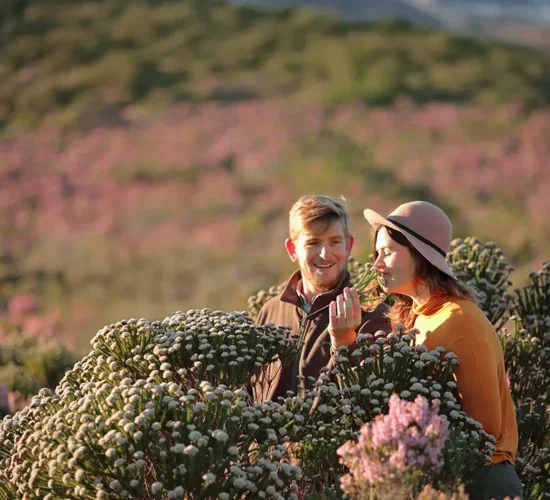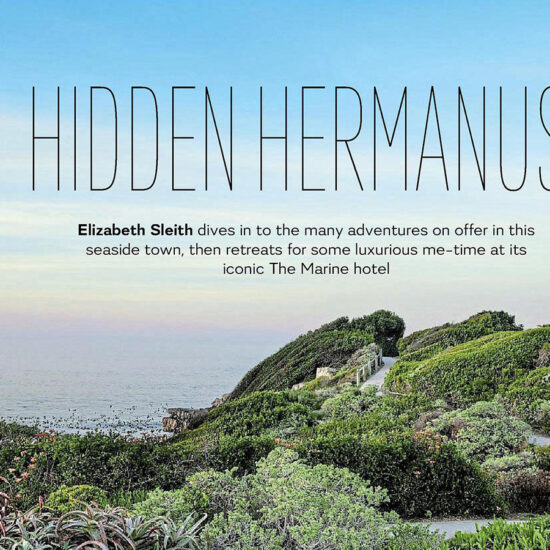Animals Living in Fynbos
Fynbos cannot support herds of large mammals since the nutrient poor soils on which it grows do not provide enough nitrogen for the protein requirements of large mammals. However, smaller mammals common to fynbos are chacma baboons, klipspringers, grysbok, dassies, mongooses, and the striped mouse.
Fynbos does not support high numbers of birds, but all six bird species endemic to the south-west Cape are fynbos species, e.g. the Cape sugarbird and orange breasted sunbird. These two birds are found only in fynbos and play an important role in pollinating flowers, including those of heaths (ericas) and proteas, from which they drink nectar. Another very common sunbird frequenting the fynbos biome, is the lesser double collared sunbird.
Fynbos also supports large numbers of butterfly species. Many are however at risk, especially the myrmecophilous (ant associated) butterflies from the family Lycaenidae. The early stages (larvae) of many of these butterfly species are entirely carnivorous and live on a diet of ant brood. The butterfly larvae actually live inside the nest of their host ant. Myrmecophilous butterflies are at threat because they require the presence of both host ant and host plant as well as optimal climatic conditions. Thus the disturbance of their prefered habitat, often not larger than a tennis court, could lead to the extinction of a rare species confined to a single location.
Although fynbos is not particularly rich in reptiles and amphibians, many of the species living there are both endemic and threatened. The very rare geometric tortoise is found in only a few surviving fynbos areas and is regarded as the world’s second rarest tortoise.
The Cape has more than half of South Africa’s frog species. Furthermore, of the 62 different frogs occurring here, 29 are endemic being found nowhere else on earth. The Table Mountain ghost frog lives only in the mountain’s fast-flowing rocky streams. The tiny micro frog and Cape platanna are restricted to a few surviving vleis in the south-west Cape. Besides these, a number of other endemic frogs also occur in fynbos.
Fynbos also has a high concentration of threatened fish species, particularly in the Olifants River system. The southern Cape has 1 rare fresh water endemic and 3 rare estuarine endemic fish, while the south western Cape has 3 endangered and 3 vulnerable fresh water endemics. Some of these endangered endemics include the Berg River redfin, the fiery redfin (known only from the Olifants River) and the Cape whitefish.
With the widespread occurrence of alien vegetation which use up more water than indigenous fynbos plants, many habitats are becoming restricted leading to local extinction of certain species of fish because isolated tributaries are drying up.
- IncludedAnimals Living in Fynbos
- Not IncludedNatureRelaxationHobbyEnthusiastsFamily-fun




